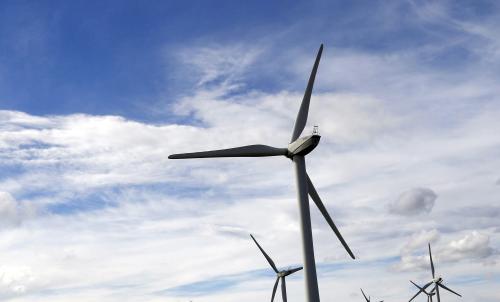As world leaders gather for the United Nations General Assembly, climate change has once again taken center stage. This morning, United Nations Secretary-General Ban Ki-moon held a special high-level ceremony for countries to formally join the Paris Agreement on climate change, which was adopted in December during COP 21. Although more than 170 nations have signed the landmark agreement, which aims to limit global warming to below 2 degrees Celsius and pursue efforts to keep the temperature increase to 1.5 degrees Celsius above pre-industrial levels, it won’t take effect until at least 55 countries accounting for at least 55 percent of global emissions ratify the deal. To date, 60 parties representing 47.76 percent of emissions have ratified the deal, crossing one important threshold for entry into force.
The role of climate finance in low-carbon resilient infrastructure (LCR)—a subset of overall infrastructure that comprises “core” infrastructure needs: power, transport, and water/sewage, as well as investments in energy efficiency—will be crucial to the global effort to reduce greenhouse gases and in order to transition to a low-carbon economy. To meet global infrastructure needs between 2015 and 2030, spending on infrastructure will need to increase from current levels of around $3 trillion a year to over $6 trillion in 2030. This increases to $8 trillion a year once investments in energy efficiency and primary energy are included.

In a new report, Senior Fellow Joshua P. Meltzer focuses on the need to financing LCR infrastructure in order to achieve the Paris Agreement’s climate change goal of keeping global average temperature well below 2 degree Celsius and in order to meet the Sustainable Development Goals (SDGs). For instance, Meltzer notes that approximately 70 percent of greenhouse gas emissions come from infrastructure (such as electricity generation, transportation, industry, and buildings) and that the resulting climate change “will have a disproportionate impact on the poorest and most vulnerable communities.”
In particular, Meltzer notes that private sector finance could meet up to half of the infrastructure investment needs. He the focuses on how climate finance can be used to increase the flow of private capital into LCR infrastructure.
Meltzer discusses the looming infrastructure needs of both emerging markets and developing economies and the role that this new infrastructure can play in either increasing or reducing the degradation of our climate. Specifically, the report:
- Outlines LCR infrastructure needs from 2015 to 2030 and the need to reallocate capital from carbon intensive infrastructure such as coal-fired power stations into low carbon energy options, energy efficiency and green technologies
- Analyzes the implications of the 2015 Paris climate change outcomes for climate finance;
- Provides an overview of available climate finance, where this finance is coming from, and how it is being used;
- Discusses how climate finance can be most effectively used to finance LCR infrastructure projects, with a focus on using public concessional finance as provided through the multilateral climate funds to de-risk and crowd-in private sector finance; and
- Explores efforts to increase private sector investment in LCR infrastructure projects by greening financial systems to ensuring that financial systems accurately account for climate risk and allocate capital consistent with broader climate change goal.
Read the related paper (PDF) »
Meltzer argues that the net costs of building low-carbon climate resilient infrastructure (LCR) are low and potentially net positive. However, he acknowledges that there are significant financing challenges because the costs and savings of building LCR infrastructure are realized by different actors at different times.
While the net costs of building LCR infrastructure are low and potentially net positive, there are significant financing challenges, as the costs and savings are realized by different actors over time.
The author explains that maximizing private sector participation in investing in LCR infrastructure could circumvent some of the political and financial difficulties associated with it. To do so, Meltzer recommends establishing tax regimes and investment protections for LCR investment projects, developing co-financing packages to de-risk investment, supporting local banks (especially in developing countries) that wish to become involved, developing green bonds and other financial instruments linked to LCR infrastructure projects, and supporting LCR infrastructure for adaption purposes.
In the end, Meltzer says, “ensuring that the infrastructure that is built is LCR infrastructure will determine whether the world achieves the SDGs and the Paris climate change goal of keeping global temperatures below 2 degrees Celsius.”
Related reading: Links in the chain of sustainable finance: Accelerating private investments for the SDGs, including climate action






Commentary
Financing a low-carbon climate resilient infrastructure for the 21st Century
September 21, 2016